ARMENIA
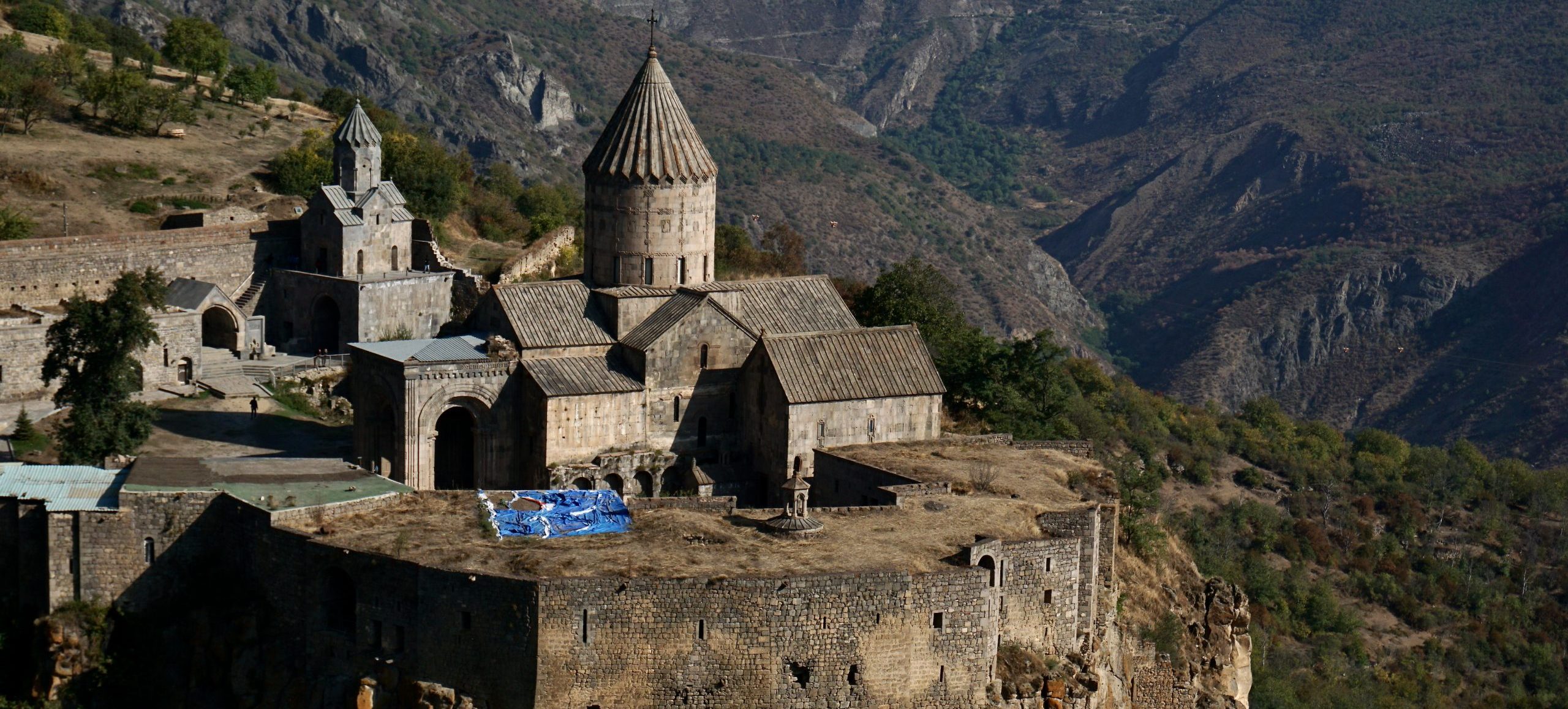
Such a small country – and so much history and current events!
Armenia is the size of the state of Brandenburg in Germany, so it’s pretty small for a country. This means that you can travel everywhere within a day – even from the northernmost tip to the southernmost point. With 3 million inhabitants, 1 million live in the capital, the rest are spread throughout the country. Important for mountain lovers: it is a mountainous country with 90% of its surface above 1,000 metres. The highest mountain is the 4,090 m high extinct volcano Aragaz. The lowest point is 380 m in the far south near the borders with Azerbaijan and Iran. The Little Caucasus runs through most of the country. The mountains have quite a lot to offer, from stepped plateaus to rugged cliffs, canyon-like depressions, a huge lake, grassy alpine pastures and forested slopes. This definitely makes Armenia a very attractive destination.
However, be prepared to encounter a lot of sadness. The genocide of 1915 is still in the back of everyone’s mind, especially since there is neither international recognition nor a Turkish apology. And Nagorno-Karabakh (Arzakh) is not only an ongoing issue, but is also very present with warfare flaring up again and again. And it is with these two enemies that they have the most common border lines. And then there are the everlasting Soviet buildings, the blocks often patched up, weathering, crumbling, the ex-factories only standing around skeletally and the brutally bombastic concrete as sculpture or square design in public space.
There are more Armenians outside than inside Armenia – (10 million – of which only 3 million are in Armenia) and they also provide an increase in income through foundations and direct remittances. Armenia itself is only recovering with difficulty after the collapse of the Soviet Union and also has difficult conditions with closed borders to Turkey and Azerbaijan, the small bottleneck of Iran and a difficult relationship with Georgia (Georgia is too close a friend to Turkey while the latter accuses Armenia of having too much contact with Russia). Great hope is placed in the IT sector and aspiring nationally conscious young people who are committed to their country.
You get along well with the people. Very little English is spoken (Russian, on the other hand, is very widespread), but they make an effort to understand and communicate. We definitely recommend an interpreter to accompany you.
Armenia is an extremely interesting destination. There is nothing wrong with getting to know the history, current politics and everyday life. A good counterbalance to this are the friendly people, the wonderful landscape, the old churches and the low level of tourism. There is much to discover and experience – travel there!
Who should travel to Armenia?
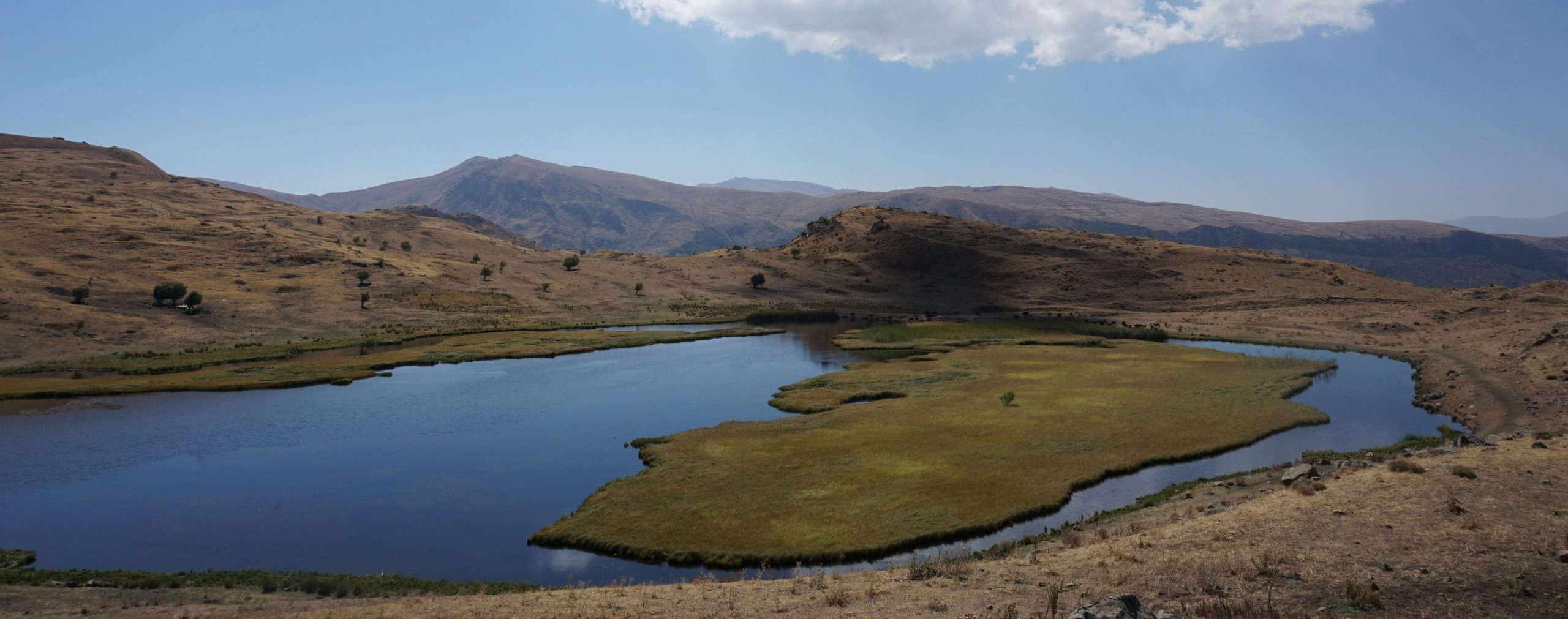
- history-interested
- ecclesiastic art freaks
- mountain- und hiking-enthusiasts
- not well-worn tourism path walkers
- Postsowjet-developments observers
- short-distance drivers
- Discoverers
Accommodation
The tourist infrastructure is not (yet) very advanced, but in principle you can find a clean place to sleep everywhere – even privately if necessary. There are guesthouses and small hotels in the important tourist places (besides Yerevan, e.g. Dilijan, Gyumri, Goris, Lake Sevan). Due to the small size of the country, many travellers stay in the capital to make day trips from there. We say: for sure extend the radius and stay overnight somewhere else. This is a much better way to get to know the country.
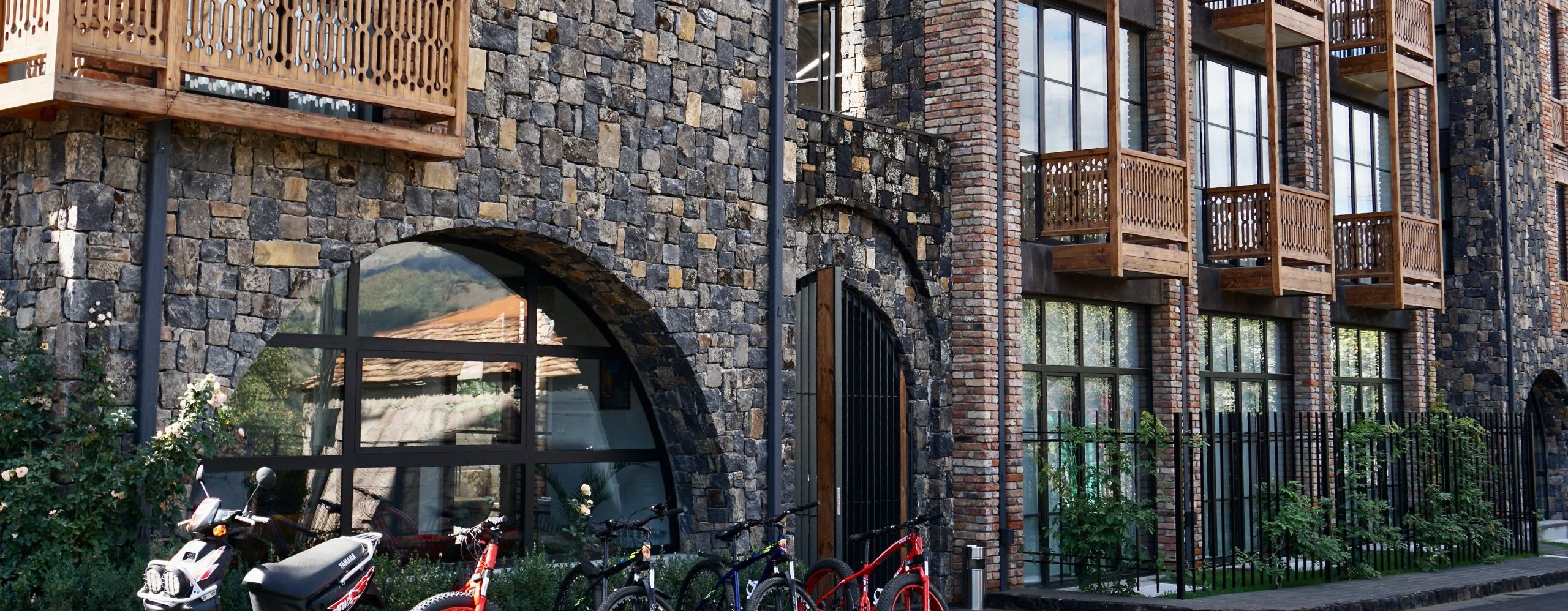
Culture
In Armenia, first of all, not much that is obvious has survived the Soviet era. There are hardly any traditional buildings (the old town of Yerevan was demolished), little public traditional design (e.g. in fabrics, everyday objects). The exception is everything to do with religion/Christianity, much has survived there (see below).
Music, dance, literature, chess, film, art – there is everything, but you have to look for it rather than it being forced on you.
Different from our home and definitely interesting is a visit to the cemetery. There are drawings of the deceased on the gravestones, and it is very interesting to see how they are depicted. There is a good opportunity in Goris.
Food is a topic of its own. Armenia’s traditional flatbread, lavash, has been given intangible UNESCO World Heritage status. A great deal is planted, harvested, dried, preserved and processed in the villages – a delicious affair! Armenia’s cuisine is varied and tasty – please try not only in the restaurants but also in private accommodation!
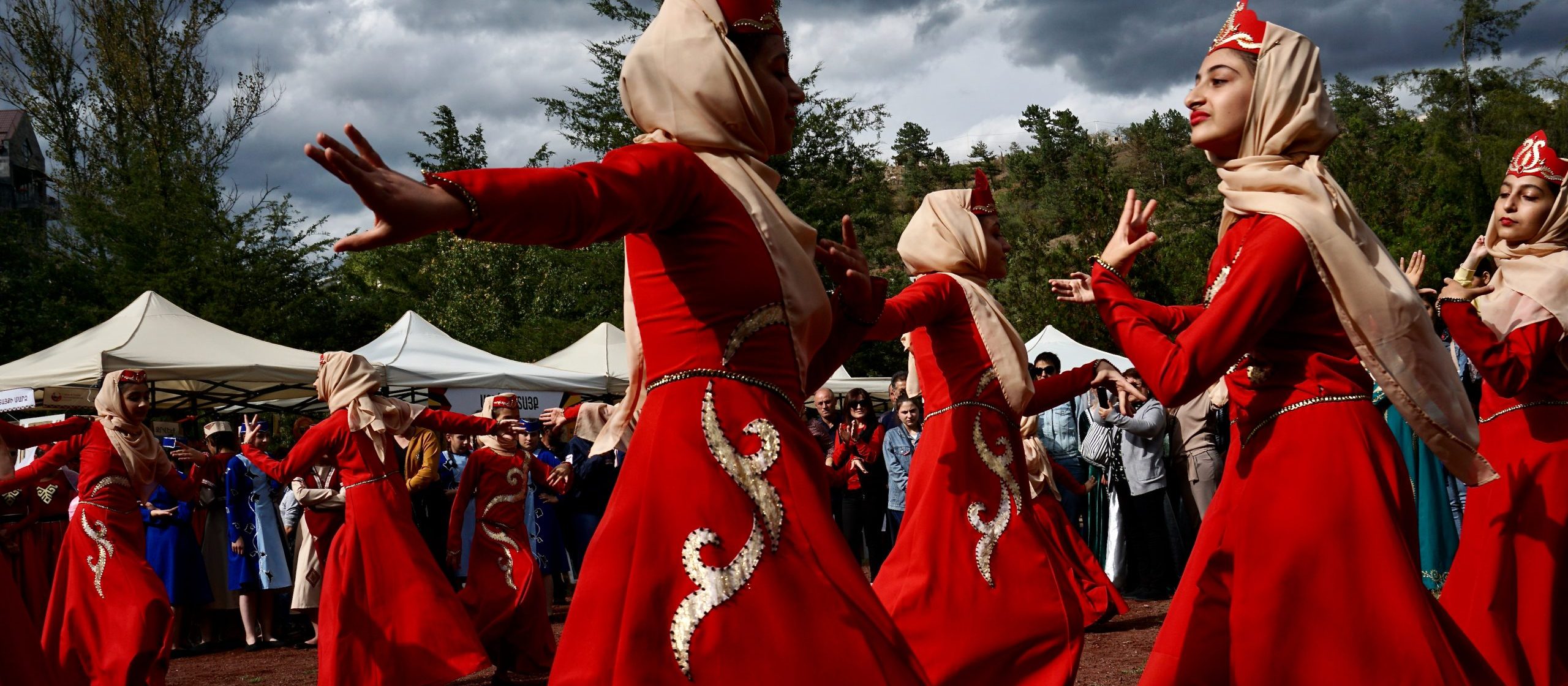
Trekking
The Transcaucasian Trail has prepared 861 interconnected kilometres of hiking trails for trekking across the country. More information is available here. You can make stages on this route – be it only one day’s stage or over several days. There are stretches where you have to take a tent and cooking utensils, but also stages with guesthouses/homestays (especially in the provinces of Syunik and Vayots Dzor). There are also other hiking suggestions, summarised and constantly expanded at Hike Armenia. The area near Dilijan is particularly suitable for day hikes. The paths are marked and range from wide to narrow. In bad weather it can be difficult, but in general the trails are easily manageable. We will be happy to arrange the tour/s that suit your wishes!
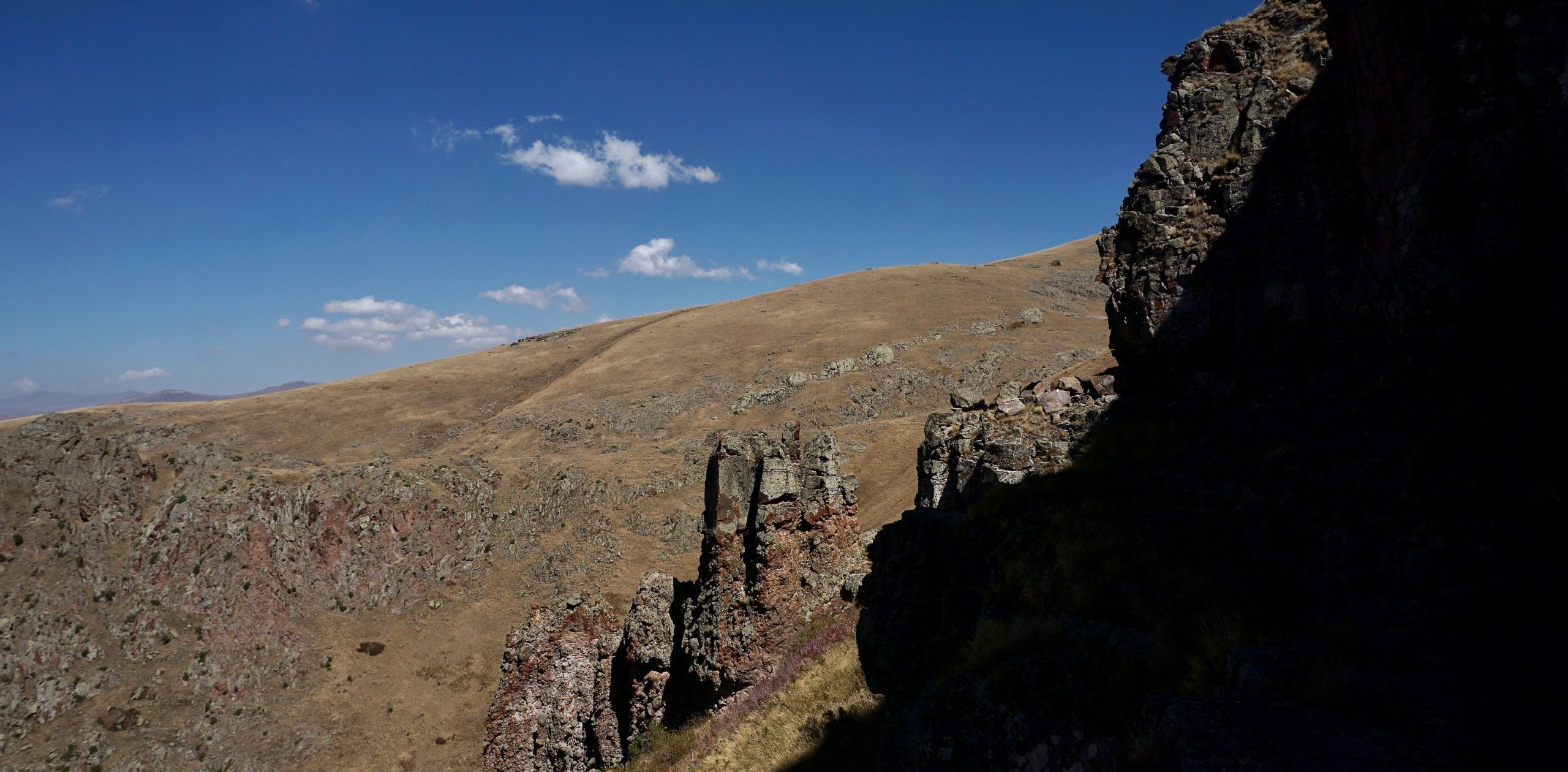
Monasteries and Churches
Armenia boasts of being the first Christian dominion, founded in 301 AD. And just as old is Etchmiadzin, considered the oldest church in the world. Also dating from the 4th century is Geghard Monastery, built in a cave. Worth mentioning as a particularly beautifully situated church is Tatev from the 9th century. In between and after that, many many more churches and monasteries were built, some large and famous, some small fine village churches, rough buildings in the forest or converted caves.
Inevitably you will see churches in Armenia – if there are specific ones you would like to visit, we will be happy to build them into the tour itinerary. Church fans will probably need several trips to discover the many details in the numerous churches.
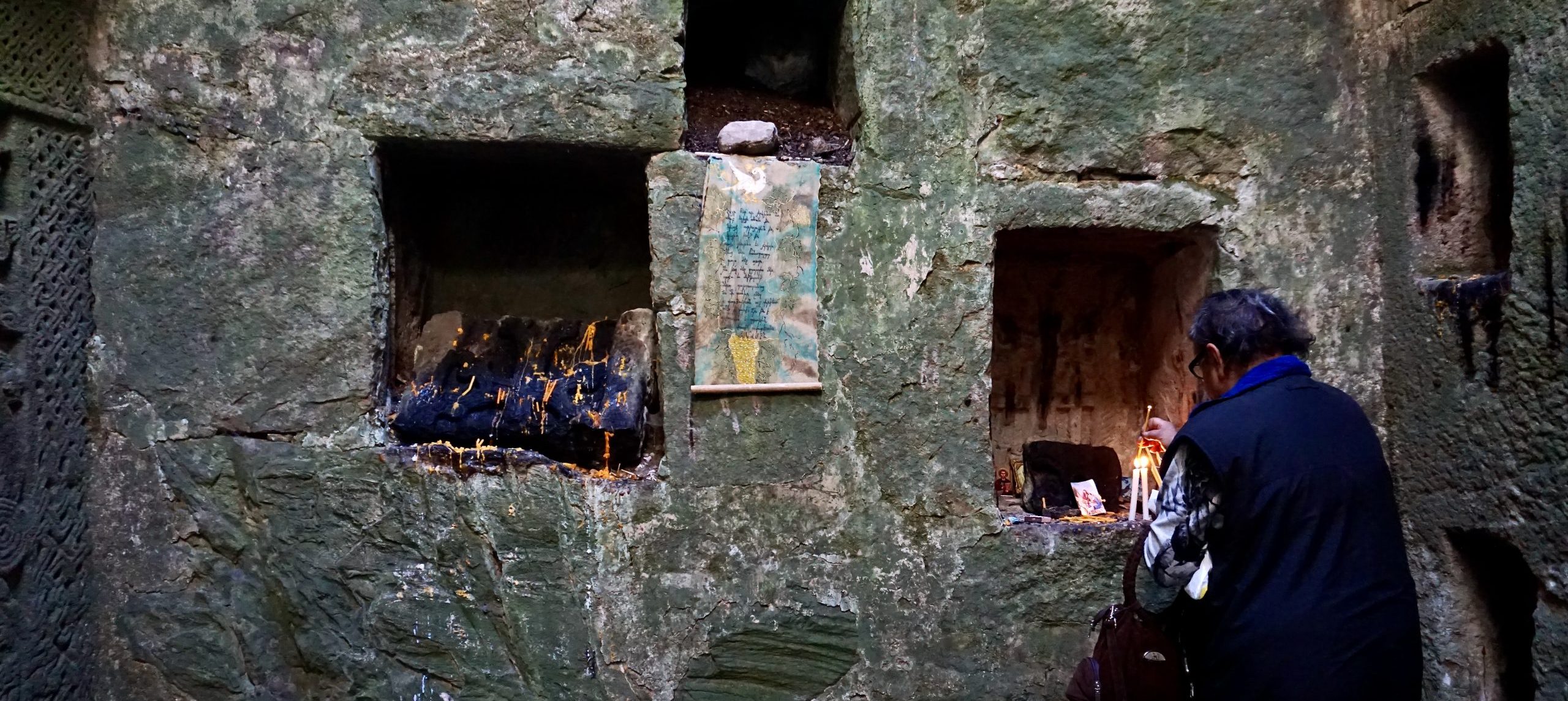
Villages
While it is possible to explore the whole country with a base in Yerevan, we recommend that you definitely include overnight stays in villages. This happens automatically on trekking tours – but even those who don’t go hiking will have an interesting time in villages with a very different life than in the big city. Besides the tranquil village life, you can also look forward to delicious food from their own harvest. In the Syunik region there are also abandoned villages to visit – an exciting thing to walk through the ruins.
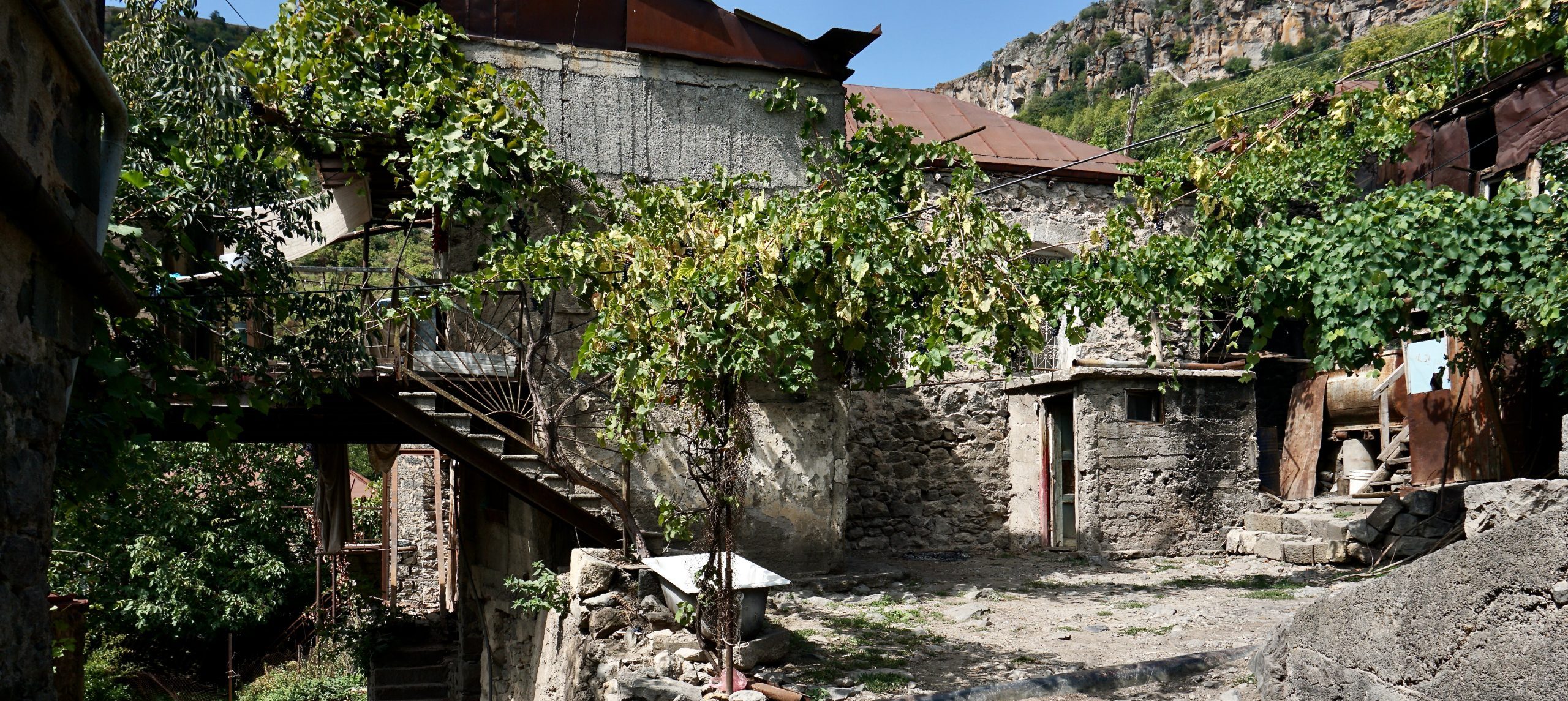
History
We have already mentioned the Christian history above. The past with the genocide at the beginning of the 20th century is still an open wound in Armenia and the subject of today’s politics. Even though it is hard, we strongly recommend a visit to the Zizernakaberd memorial and exhibition in Yerevan. 24 April, the date on which the first arrests of Armenian intellectuals took place in Istanbul, is a major national day of remembrance. All in all, Armenia has had quite an eventful history, which can be experienced bit by bit on a journey. But the more recent developments with the Velvet Revolution in 2018 and the change of president are also interesting.
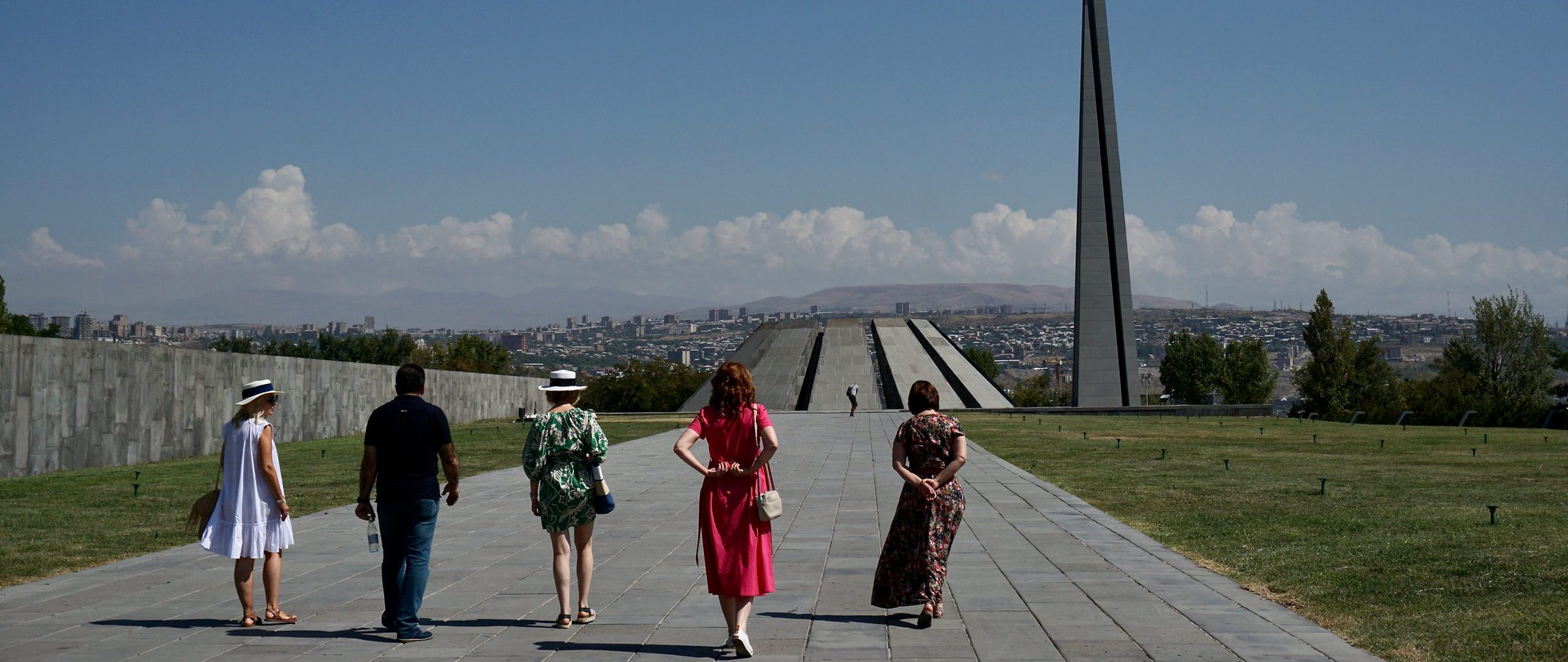
Lakes
At an altitude of 1,900 m, Lake Sevan, which covers 1,272 square kilometres, is surrounded by mountains. During the Soviet era, its water was used too extensively for the surrounding agriculture and the water level dropped considerably. With tunnel systems to other water sources from the 1990s onwards, the water level could be raised again. However, fish stocks are still not abundant and so there is a limit to fishing. Armenian families enjoy bathing on its shores, and the picturesquely situated Sevanavank monastery is also an attraction.
Besides the large Lake Sevan, there are several small lakes in the country, e.g. in the hiking area of Vayots Dzor. Like little blue jewels, they lie gracefully in the vast landscape – unfortunately, most of them are too swampy for you to jump in.
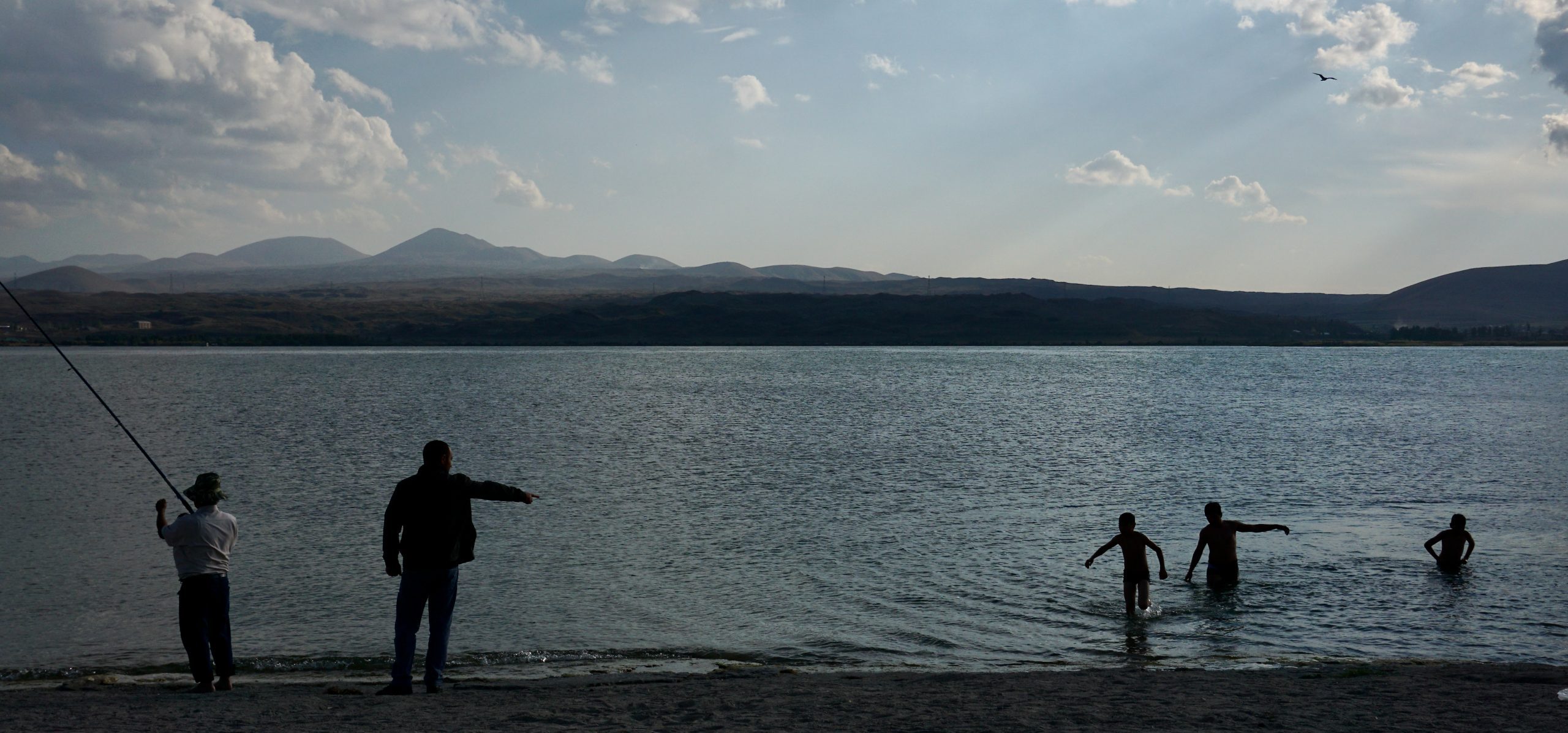
Yerevan
With just over 1 million inhabitants, Yerevan is the largest city and capital of Armenia. It is also considered one of the oldest cities in the world, founded in the 8th century. However, the historic city centre has been demolished and replaced with new buildings. This has not gone down badly, the streets are bustling with people, the pubs well frequented and the shopping opportunities many. But the hidden treasures can easily be discovered with a guided tour.
As a centre of business, culture, education and science with a high growth rate in recent decades, the city appears young and lively. The spacious area still offers enough space for everyone. Traffic is moderate and is further eased by the metro system built at the end of the 1970s. It is not very big: 10 stations are located on 12.1 kilometres of track. It is very cheap, fast and jolting – in short: an experience!
Various sights – at the top the Zizerkanaberd Memorial and Museum, Republic Square and the Cascades with the Mother of Armenia and, in good weather, a view of Mount Ararat above everything – invite you to spend some time here. Markets, museums and religious sites round off the attractions. But there is also a lot to discover, especially when strolling aimlessly.
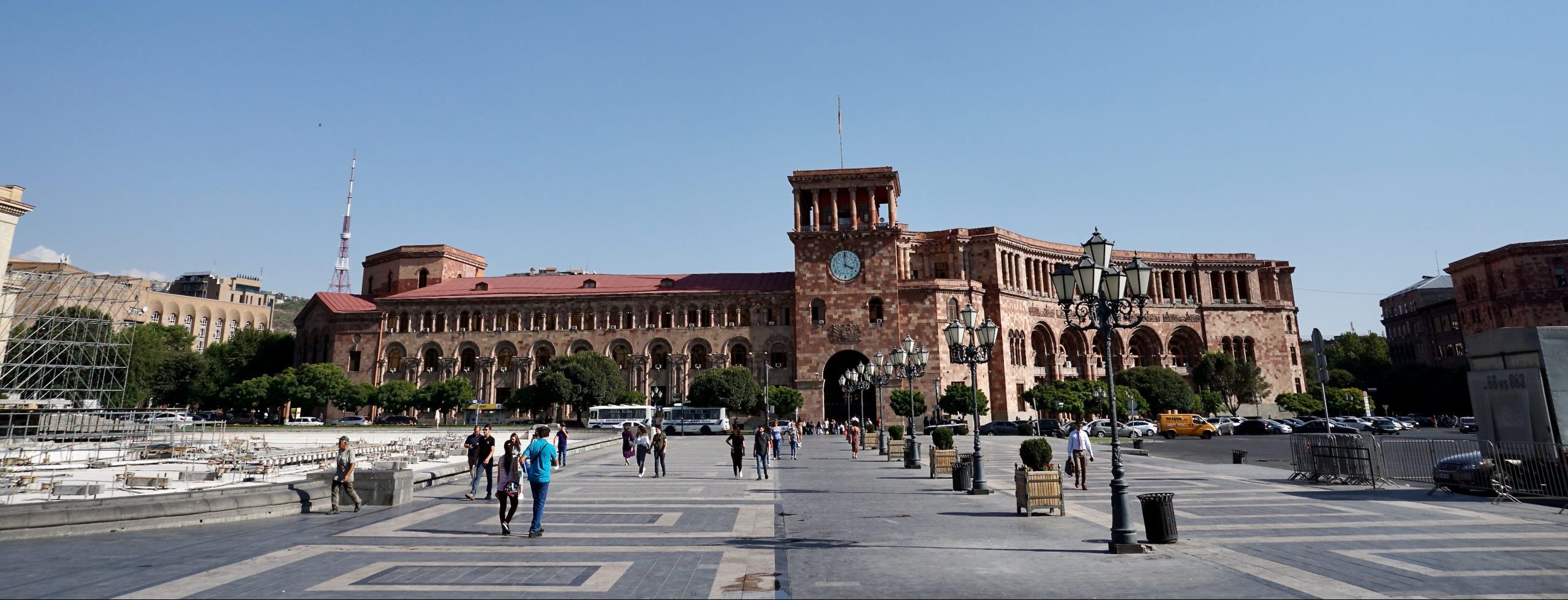
On the road
The most comfortable way is, of course, an (off-road) car with driver, which will take you to the remotest corners of Armenia. The road conditions are good overland, to the villages rather challenging. Getting around by public transport is exciting and cheap. For overland routes there are marshrutkas (minibuses), but these tend to start/finish only from/to Yerevan. So there are not so good connections between the different places. They tend to leave at fixed times, but often only start when even the last seat is taken. Together with the guide, however, we recommend travelling at least one stretch publicly.
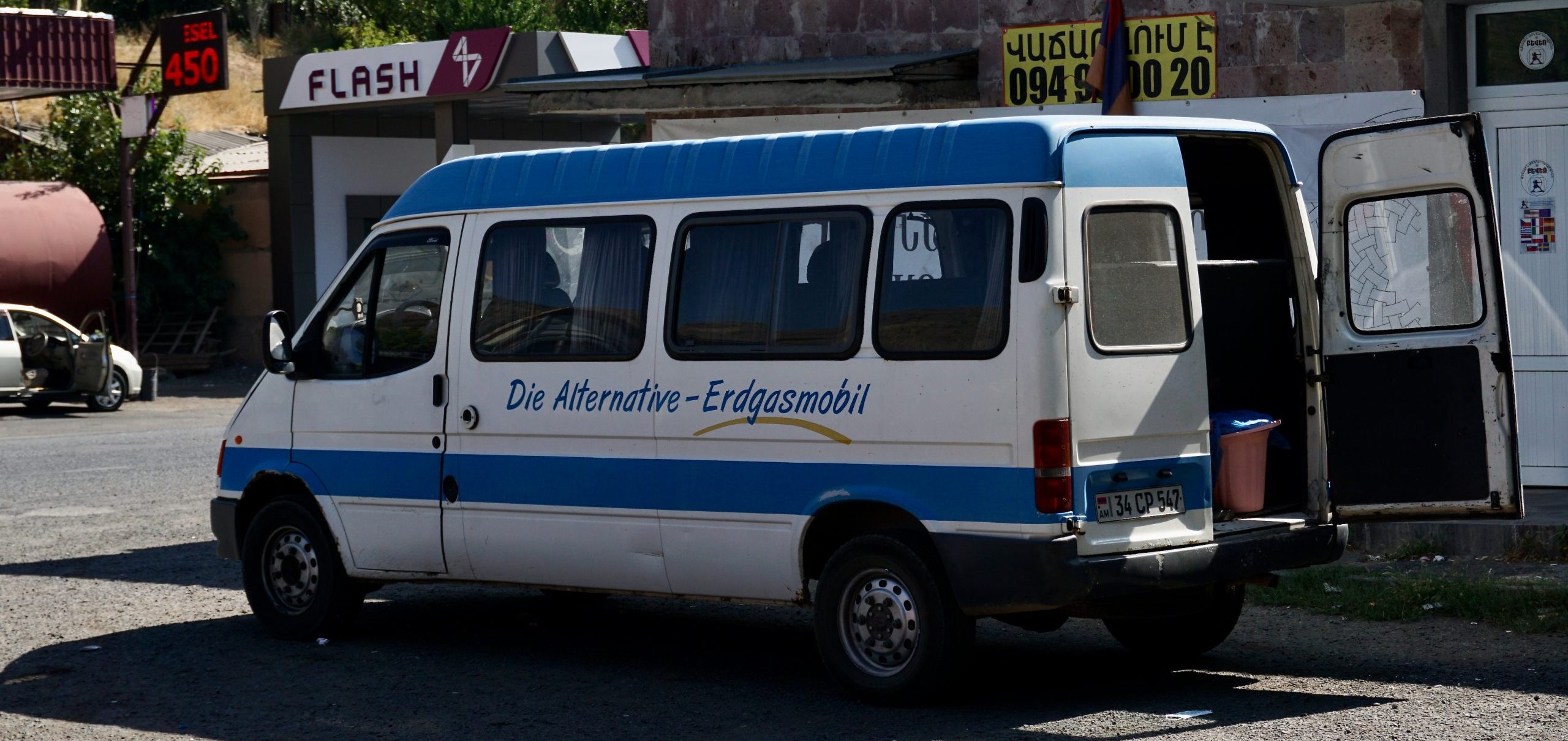
Blog
There is a blog from my own trip in autumn 2021 and thus a good opportunity to get a small impression:
